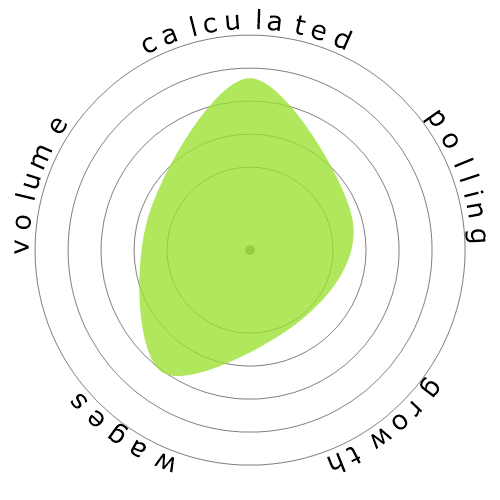Bioinformatics Scientists
Employment data isn't available specifically for this occupation from the Bureau of Labor Statistics, so we are using the data from Biological Scientists, All Other.




People also viewed
Calculated automation risk
Low Risk (21-40%): Jobs in this level have a limited risk of automation, as they demand a mix of technical and human-centric skills.
More information on what this score is, and how it is calculated is available here.
User poll
Our visitors have voted they are unsure if this occupation will be automated. However, employees may be able to find reassurance in the automated risk level we have generated, which shows 25% chance of automation.
What do you think the risk of automation is?
What is the likelihood that Bioinformatics Scientists will be replaced by robots or artificial intelligence within the next 20 years?
Sentiment
The following graph is included wherever there is a substantial amount of votes to render meaningful data. These visual representations display user poll results over time, providing a significant indication of sentiment trends.
Sentiment over time (yearly)
Growth
The number of 'Biological Scientists, All Other' job openings is expected to rise 5.6% by 2033
Updated projections are due 09-2025.
Wages
In 2023, the median annual wage for 'Biological Scientists, All Other' was $91,100, or $43 per hour
'Biological Scientists, All Other' were paid 89.6% higher than the national median wage, which stood at $48,060
Volume
As of 2023 there were 61,220 people employed as 'Biological Scientists, All Other' within the United States.
This represents around < 0.001% of the employed workforce across the country
Put another way, around 1 in 2 thousand people are employed as 'Biological Scientists, All Other'.
Job description
Conduct research using bioinformatics theory and methods in areas such as pharmaceuticals, medical technology, biotechnology, computational biology, proteomics, computer information science, biology and medical informatics. May design databases and develop algorithms for processing and analyzing genomic information, or other biological information.
SOC Code: 19-1029.01


Comments
1) AI can process and analyze large amounts of data much faster than humans can. This is essential in bioinformatics, where scientists are often dealing with terabytes or petabytes of data. AI can help to identify patterns and correlations in this data that would be impossible for humans to find.
2)AI can be programmed to perform repetitive tasks with high accuracy. This is another important skill for bioinformatics scientists, who often spend a lot of time performing tasks such as data cleaning and analysis. AI can automate these tasks, freeing up scientists to focus on more creative and strategic work.
3)AI can be used to generate hypotheses and make predictions. This is a critical skill for bioinformatics scientists, who are constantly trying to understand the complex relationships between biological molecules. AI can be used to analyze data and identify patterns that may suggest new hypotheses or predictions.
4)AI can be used to design and conduct experiments. This is a more advanced skill, but it is one that AI is becoming increasingly capable of. AI can be used to design experiments that are more efficient and effective than those that could be designed by humans.
Technologies to profile molecules in cells could also be invented by AIs
Leave a reply about this occupation